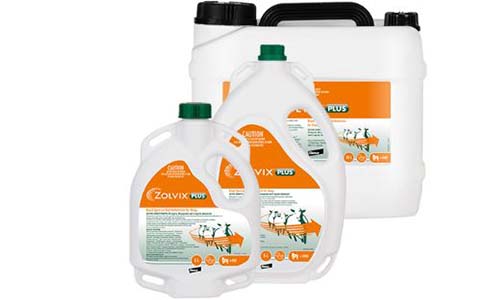Lamb and wool producers are urged to conduct a DrenchCheck to determine the efficacy of their proposed sheep drench this season.

Elanco Brand Manager – Sheep, David Rathbone, says there is widespread single, double and triple resistance to all older active ingredients, including moxidectin.1
“Despite this, many livestock producers do not know the efficacy of their drench or incorrectly believe it is still fully effective,” he says.
“Unfortunately, resistance isn’t ‘black’ or ‘white’.
‘Resistance’ is defined as when a drench is unable to reduce the worm burden by more than 95 per cent.2
“Some drenches might have 90 per cent (pc) efficacy; some might have 80pc efficacy, and some might have 50pc.
“These drenches are ‘working’ to some degree – but any reduction in efficacy has a direct impact on the health and productivity of sheep.
“Even mild or moderate levels of drench resistance can result in a significant economic loss to the producer.”3
Elanco assisted 121 lamb and wool producers who participated in the Zolvix Plus Challenge to complete DrenchChecks during 2022 and 2023.4
In 53 of these DrenchChecks, the drench administered failed to achieve greater than 95 per cent control of the worms present in the sheep at the time of testing, suggesting some level of resistance.
“Some of the results showed the drench was not working as well as it should,” Mr Rathbone says.
“In others, it showed the drench didn’t work at all or gave an indication that a specific worm species was highly resistant to that mode of action.
“Our advice is simple: if you don’t know the drench resistance status of the worm population on your property, then you should conduct a DrenchCheck and find out.”
Industry guidelines recommend that producers monitor drench efficacy regularly; only use ‘fully effective’ drenches or ideally, combination drenches; and only use long-acting drenches during high worm-risk conditions.5
Elanco is continuing to offer free DrenchChecks via the Zolvix Plus Challenge.
“We are committed to helping our customers to get the best outcome from their investment in animal health products,” Mr Rathbone says.
To participate, register online at Zolvix Plus Challenge before your next planned drench.6
A DrenchCheck involves conducting two Worm Egg Count tests to determine the reduction in the worm egg count after drenching.
The first test is conducted before drenching, while the second is conducted 10 to 14 days after drenching.
The presence of any worm eggs – even very low counts – 10 to 14 days after drenching may indicate a problem.
The larval culture results from the second test will indicate which worm species survived treatment and may be resistant to that drench.
“A DrenchCheck provides a simple and cost-effective method of determining the effectiveness of your current drench against the worm burden in your sheep at the time of testing,” Mr Rathbone says.
“However, it is a ‘first step’ and does not accurately determine resistance status.”
Conducting a full Drench Test (Worm Faecal Egg Count Reduction Test) every two or three years is regarded as best practice to accurately determine the resistance status and efficacy of each drench class against each worm species.7
This article was written by Elanco for Seasons magazine.
* Disclaimer – Important, please read:
The information contained in this article is given for general information purposes only, current at the time of first publication, and does not constitute professional advice. The article has been independently created by a human author using some degree of creativity through consultation with various third-party sources. Third party information has been sourced from means which Elders consider to be reliable. However, Elders has not independently verified the information and cannot guarantee its accuracy. Links or references to third party sources are provided for convenience only and do not constitute endorsement of material by third parties or any associated product or service offering. While Elders has exercised reasonable care, skill and diligence in preparation of this article, many factors including environmental/seasonal factors and market conditions can impact its accuracy and currency. The information should not be relied upon under any circumstances and, to the extent permitted by law, Elders disclaim liability for any loss or damage arising out of any reliance upon the information contained in this article. If you would like to speak to someone for tailored advice specific to your circumstances relating to any of the matters referred to in this article, please contact Elders.
References:
1. Playford, M.C. et al. (2014). Prevalence and severity of anthelmintic resistance in ovine gastrointestinal nematodes in Australia (2009-2012). Aust Vet J 92(12):464–471. 2. Coles, G. et al. (2006). The detection of anthelmintic resistance in nematodes of veterinary importance. Veterinary Parasitology. 136:167-185. 3. Besier, R.B., et al. (1996). Drench resistance – a large economic cost. J Agric West Aust 37:60–63. 4. Elanco DrenchChecks 2022/23 National Summary – Technical Update PM-AU-24-0150. 5. Wormboss, Choosing and Using Drenches. 6. Zolvix plus challenge (tems and conditions apply). 7. Wormboss, Checking for drench resistance with a DrenchCheck.
